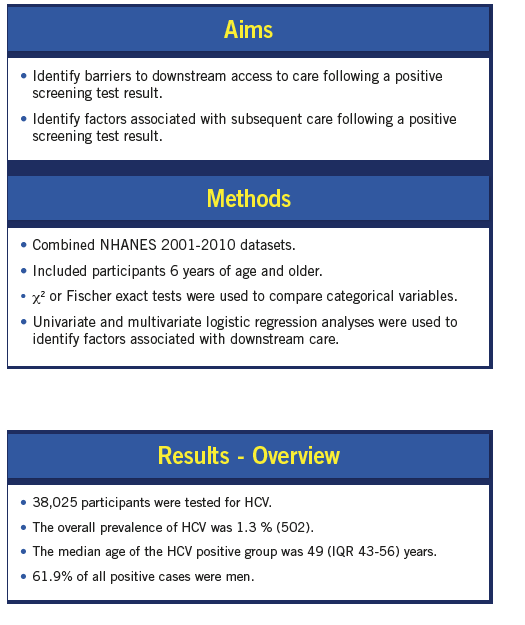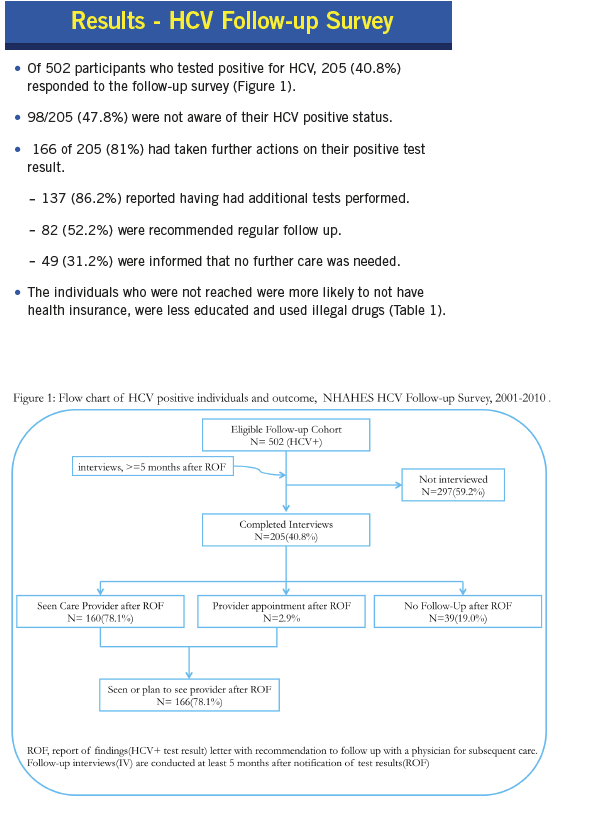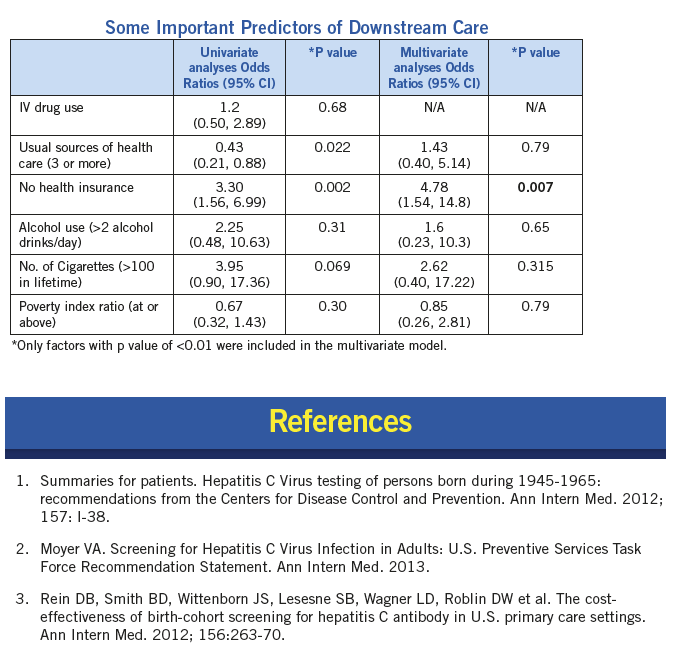 |
 |
 |
| |
Bridging the Gap between HCV Screening and Access to Care:
Insights from National Health and Nutrition HCV Follow-up Study, 2001-2010
|
| |
| |
Reported by Jules Levin
DDW 2014 May 4-6 Chicago, ILL
Ivo Ditah, MD, MPhil1; Taiwo Ngwa, MD2; Michael Charlton, MD3; and Patrick S. Kamath1
Division of 1Gastroenterology and Hepatology; 2Internal Medicine, Mayo Clinic, Rochester, MN; 3Hepatology and Liver Transplantation, Intermountain Medical Center, Salt Lake City, UT, United States

Program abstract:
Background
Many individuals infected with the hepatitis C virus (HCV) are asymptomatic and are unknown to the healthcare system. In light of the dramatically changing HCV therapeutic landscape, the Center for Disease Control and USPSTF recommend risk based and "birth cohort (1945-1965) screening" for HCV infection. However, it is unknown whether a positive HCV screening test would lead to further HCV-related care. It is also presumed that positive test results are synonymous with receiving further required care. The objectives of this study are to 1) compare individuals who pursue HCV-related care after notification of positive test results to those who do not, and to 2) identify factors that predict further HCV-related care after diagnosis.
Methods
We analyzed data from participants of the NHANES 2001-2010. Participants who tested positive for HCV had follow-up interviews 6 months after they were notified of their test results and encouraged to pursue further care.
Results
A total of 52,195 individuals participated in the NHANES survey from 2001- 2010. Of these, 43,179 were 6 years and older. Adequate serum samples were tested in 38,025 persons, with 502 (1.3%) having evidence of past or current HCV infection and eligible for HCV follow-up survey. HCV-RNA was detected in 360 (78%) individuals. The mean age of the HCV positive cohort was 50 (s.d. 12.0) years, with a 62% male predominance. A total of 206 individuals participated in the follow-up interviews-a 41.4% response rate. The main reason for not obtaining a follow-up survey was inability to contact participants (83.5%). About 50% of patients did not know of their HCV positive status before notification. About 80% had seen a doctor or had an upcoming appointment regarding their test results. Factors associated with patients not having pursued further care after notification included having no insurance, IV drug use, smoking, not having a consistent source of obtaining their medical care, an increasing family size, living below poverty index ratio and living in the US for less than 10 years. Individuals who pursued further care were more knowledgeable regarding transmission and health related complications of HCV infection. In the multivariate model, the only predictor of pursuing further management after diagnosis for HCV was having health care insurance.
Conclusion
The majority of patients who screen positive for HCV infection do pursue further HCV-related care. This study suggests that lack of health insurance is the main limiting factor in pursuing further HCV-related care. Expanding health care coverage is likely to increase access to HCV-related care.



|
| |
|
 |
 |
|
|